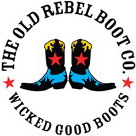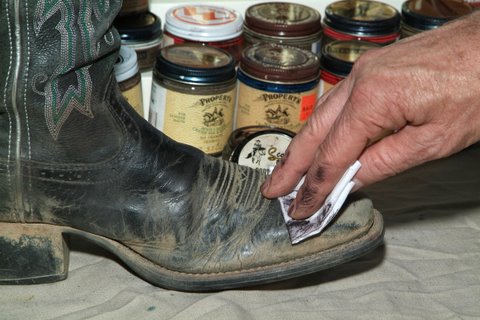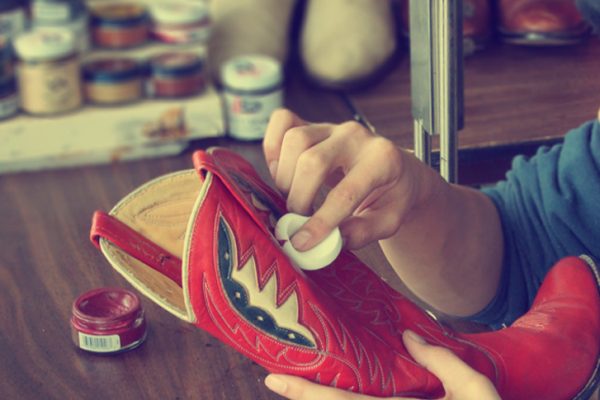
THE FOUR Rs OF LIFE: RESTORE, RE-USE, RE-LOVE, REHOME. ONE BIG SHOUT-OUT TO THE COMBEBACK OF A THOUSAND LEGENDS.
Once the boot shipments arrive at our turn of the century three-story restored farmhouse in the heart of Minneapolis, the real artistry begins.
Our boot-looting road trips are a treasure hunt – hunting for boots that have the bones, the pedigree, the history and the right look, but are in need of a little faith and a lot of elbow grease and patience. We cross our fingers, upend the boxes that have arrived and out tumble hundreds of pairs of rubber-banded boots that we hope will look as promising as they did when we bought them. We rarely bat a thousand – there are always those flaws we miss at the raghouse that break our heart, and it seems like they’re always some of the prettiest boots. Exotic skins or hides with rips or tears, linings that have crumbled from age, a size so small that only a cat could wear them.
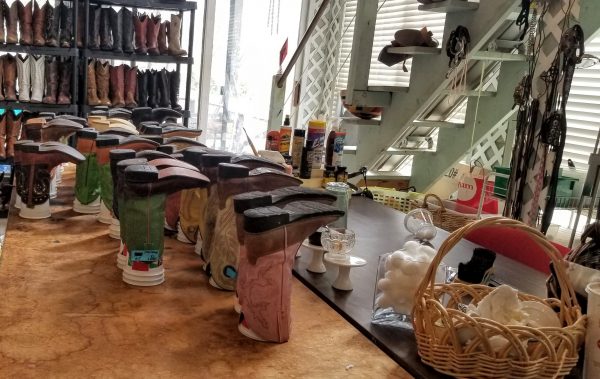
We do a massive sort the first day – problem boots that are fixable get boxed up to send to our master cobbler in a small town in Iowa for sole or boot pull repairs or new heels. The unrescuables will be parted out and sold to crafters to repurpose into purses, belts, bracelets and birdhouses.
The rest of the haul? Its elbow grease time. Although many of our finds look as if they were pampered and indulged, most of them look like they came straight from the pasture or the worksite – dirty and dusty with straw, manure, mud and tar on the soles.
Armed with stiff brushes, thick sponges, soap, conditioner and faith, our crew sets to work to transform hundreds of “rode hard and put away wet” boots into the magnificent bastards you’re guaranteed to fall in love with. Restoration HQ is our two story sun-baked greenhouse with banks of big windows floor to ceiling. It’s kitted out with long battered wooden tables, tins of saddle soap and bottles of conditioner, straw baskets of polishing rags, hoofpicks to get the dried mud out of tread soles, and an Italian industrial steamer to sterilize the inside of the boots. The rows of polishes and dyes in every color, and the Mason jars filled with sable paint brushes, would feel right at home in an artist’s studio on the left bank of Paris.
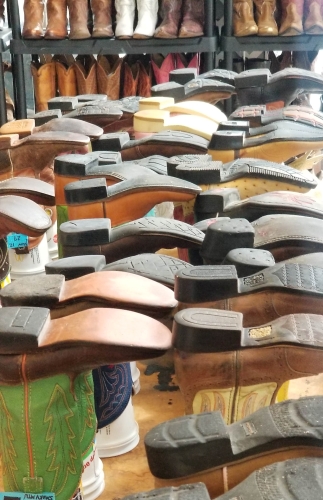
There is a twelve-step process for bringing every pair rip-roaring back to life and straight into your heart. The dirt and dust is brushed off with stiff brushes and soft rags so our crew has a clean canvas to work on. Next the boots are steamed inside and out with our Italian industrial steamer, and treated with saddle soap. The soles are scrubbed with either a stiff metal brush for work boots or a soft sponge for leather boots. The now damp but prettier boots are put on drying racks away from the sun. Once they’ve dried completely, they are polished, touched up with dye if needed, and allowed to dry again, before conditioning, buffing and dressing the soles. The last step is to stuff the boots with crumpled plastic bags and shoe trees to keep their shape and be camera-ready for our photographer.
And for a second life with someone like you.
